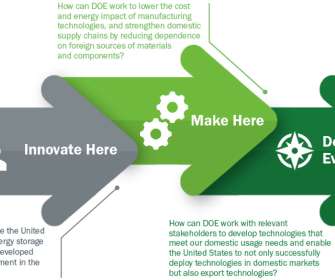DOE releases Energy Storage Grand Challenge Roadmap; 44% reduction in manufactured cost for 300-mile EV pack by 2030
Green Car Congress
DECEMBER 22, 2020
The US Department of Energy (DOE) released the Energy Storage Grand Challenge Roadmap , the Department’s first comprehensive energy storage strategy. billion into energy storage research and development—$400 million per year, on average.












Let's personalize your content